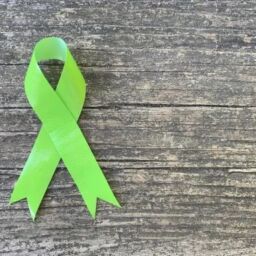
Abuse And Technology: The Dark Side Of Technology Advancement
by- Amanda Hildreth
In many ways, technology has improved our lives. It is integral to many aspects of our daily lives. However, there is also a dark side to technology, as technology is increasingly being used to control Victims of abuse.
Technological Abuse uses everyday tools like online platforms, mobile devices, and smart devices for the purpose of abuse.
What Does Technology Abuse Look Like?
Technology Abuse can appear in numerous ways to include the following (FinAbility, 2023):
- Communication online through social media, phone, text, or email without consent. This can include trying to reach you through a friend, family member, child, etc.
- Impersonating someone online to contact you
- Impersonating you online
- Making someone send proof of their location
- Checking someone’s text messages, social media interactions, or other internet usage
- Sending abusive emails, texts, or other messages
- Making excessive texts and calls to reach you
- Watching your online activities through spyware
- Making threatening phone calls
- Forcing someone under threat of violence to give them a password to gain access to their accounts or devices
- Keeping someone’s phone or limiting who they can contact
- Sharing intimate photos of someone without consent
- Using a GPS tracker on your car to track you
- Using smart devices in the home or smart watches to monitor you
How Prevalent Is Technology Abuse?
Technology Abuse is very prevalent worldwide. The following are statistics about the prevalence of this abuse (NARIKA, 2018):
- 97% of Domestic Violence programs report abusers using technology to control, monitor, and harass Victims
- 80% of Domestic Violence programs report abusers monitoring a Victim’s social media accounts
- 86% of Domestic Violence programs report that Survivors are harassed using social media
- 1 in 4 Victims of stalking receives unwanted calls, emails, texts, and cyberstalking
In 2019, 71% of Domestic Abuse perpetrators monitored a Victim’s devices and activity, and 54% downloaded stalkerware on the Victim’s device (Parsons et al., 2019). In January 2020, 60 to 63% of Victims had reported Technology Abuse (Messing, Bagwell-Gray, Brown, Kappas & Durfee, 2020).
Abusers have used technology to harass and monitor Victims for years, but the pandemic has created more opportunities for abuse than before. It is easier to get access to someone’s phone to change privacy settings, get passwords, and put tracking software on their phone due to spending more time with their partners in close quarters (Godin, 2020).
The Impacts Of Technology Abuse
Being harassed and monitored can leave you feeling powerless and make you afraid for your safety. Someone who uses technology to abuse is also likely going to make it harder for you to leave the relationship by limiting your contact with family, friends, or support services. After you leave the relationship, the abuser may still use technology to abuse you and track your location (Safe Steps Family Violence Response Centre, 2023).
New Forms Of Abuse Using Technology
With new developing technology also emerge new forms of abuse.
Some mobile device apps allow hidden surveillance. One study found a 93% increase in the use of spyware apps since the start of the pandemic (Avast, 2021).
There are also tracking apps designed for child or anti-theft protection that are easily accessible in the app store or on legitimate websites. Research shows these apps have been used to stalk or spy on Victims (Freed, D., Palmer, J., Minchala, D., Levy, K., Ristenpart, T., & Dell, N. 2018)
Abusers have also been known to use covert monitoring devices like Apple AirTags to track someone’s car (Matei, 2022). Smart locks, thermostats, TVs, sound systems, and security monitoring are also being used to control Victims and monitor their movements.
Fake accounts on social media are also being used with the intent of abuse. These accounts often present the Victim in a negative light or in a derogatory way (Sugiura, L., Nurse, J. R. C., 2023).
How Can I Protect Myself If I’m Using Connected Devices?
To use connected devices safely, make sure you know how your devices connect to each other, what information is available, and what security features the technology has.
If you suspect one of your devices is being misused, you can document the abuse. Documenting the abuse can show you patterns and help you build a case if you are pursuing legal action.
Safety planning with someone who has an understanding of Technology Abuse is also a good idea (WomensLaw.org., 2023). A Norm Therapist® can be a trusted resource to help you with safety planning and abuse recovery. To learn more or to schedule Norm Therapy® sessions, go to: https://abuserefuge.org/norm-therapy-victim-or-survivor-form.
We at ARO are here to support you in your personal healing journey to complete well-being. We bring awareness and education to 21 different types of abuse including Sexual Abuse, Spousal Abuse, Physical Abuse, Psychological Abuse, Narcissistic Abuse, Financial Abuse, Self Abuse, Elderly Abuse, Isolation Abuse, Child Abuse, Bullying, Cyberbullying, Workplace Abuse, Religious Abuse, Medical Abuse, Food Abuse, Authority Abuse, Educational Abuse, Child Sexual Exploitation, Sex Trafficking, and Political Abuse and help others heal and find peace. Please support our efforts by going to GoARO.org to learn how you can make an impact on the Abuse Care Community and provide life-saving financial assistance with a donation.
Sources
FinAbility. (2023). About technology abuse. About Technology Abuse. ;
Tech abuse awareness. NARIKA. (2018). ;
Parsons, C., Molnar, A., Dalek, J., Knockel, J., Kenyon, M., Haselton, B., Khoo, C., & Deibert, R. (2019, June 12). The predator in your pocket: A multidisciplinary assessment of the stalkerware application industry. The Citizen Lab. ;
Messing, J., Bagwell-Gray, M., Brown, M. L., Kappas, A., & Durfee, A. (2020, January 6). Intersections of stalking and technology-based abuse: Emerging definitions, conceptualization, and measurement – journal of family violence. SpringerLink. ;
Godin, M. (2020, December 31). How technology is enabling domestic abusers in the pandemic. Time. https://time.com/5922566/technology-domestic-abuse-coronavirus-pandemic/
Technology abuse. Safe Steps Family Violence Response Centre. (2023, July 26). ;
Avast. (2021, April 22). Use of Stalkerware and Spyware Apps Increase by 93% since Lockdown Began in the UK. ;
Freed, D., Palmer, J., Minchala, D., Levy, K., Ristenpart, T., & Dell, N. (2018, April 21). “A stalker’s paradise”: How intimate partner abusers exploit technology. https://dl.acm.org/doi/pdf/10.1145/3173574.3174241
Matei, A. (2022, January 20). “I was just really scared”: Apple AirTags lead to stalking complaints. The Guardian. ;
Sugiura, L., Nurse, J. R. C. (2023, January 12). How tech is driving new forms of domestic abuse. The Conversation. https://theconversation.com/how-tech-is-driving-new-forms-of-domestic-abuse-176187
Abuse using technology. WomensLaw.org. (2023, August 23). ;
















